Do It Yourself
Foraging For Wild Edible Plants Across the Nation
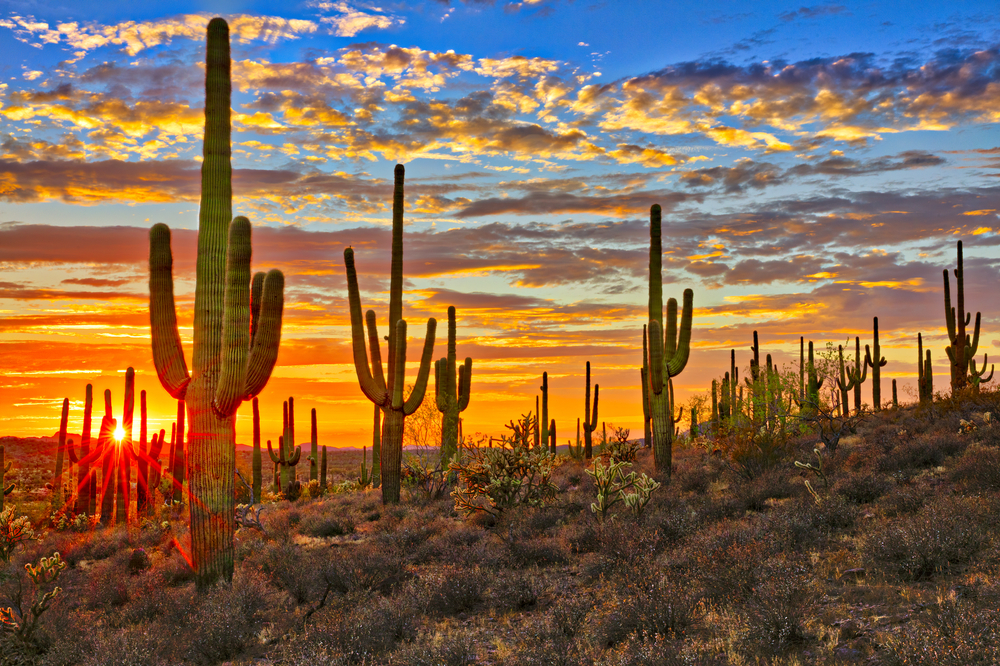
When the lawlessness takes over the land and you’re forced to the woods, how will you survive? One of the ways is to forage wild edible plants as your source of sustenance. Here are some tips to help you.
Wild Edible Plants in The U.S.
We have long forgotten how to EAT THIS NATION. It is information that probably disappeared with the native Americans. They lived in all parts of the nation and had to understand what to eat to survive.
Thanks to bushcraft and naturalist communities, we have been able to compile comprehensive lists and great books about wild edibles that can be foraged.
We are going to look at five regions of the United States and give you the wild edible plants from each region. Some do overlap regions but get to know them all. You never know where your next adventure might take you.
1. Rocky Mountains
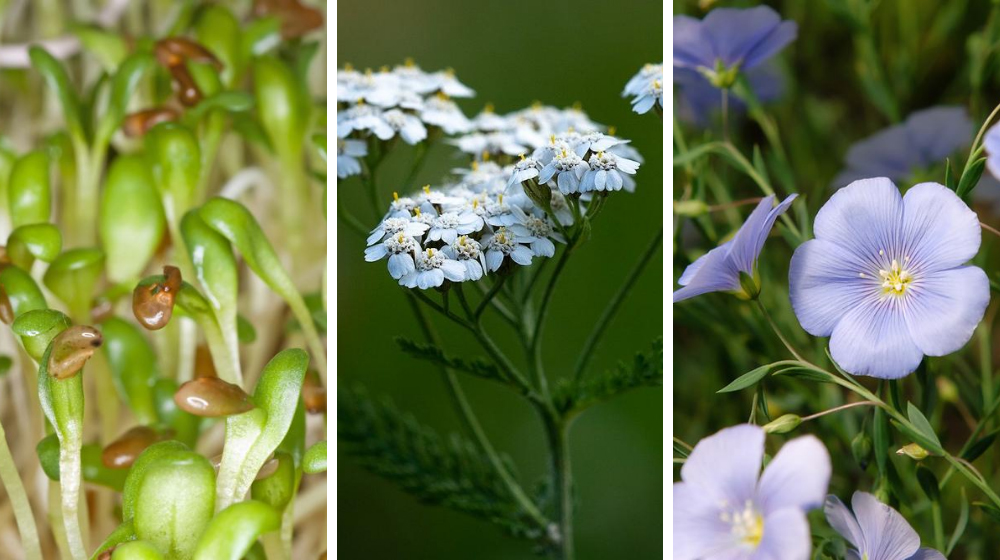
- Left: Alfalfa | Center: Yarrow | Right: Western Blue Flax
- Salsify
This delicious root can be peeled and sautéed as a vegetable side. Salsify is also a great wild edible for drying and long-term food storage.
- Alfalfa
Alfalfa is a favorite of small herbivorous mammals in the mountains. However, it is a pretty tasty addition to things like salads.
Dried it can be rather good, too. I cannot say I would go out of my way for alfalfa, but many people do love the sprouts!
- Yarrow
Yarrow is edible, and it’s a delicious leaf that can be added to several dishes. It is one of those incredible plants that can both help with hunger and is also a styptic herb that helps with slowing bleeding.
- Western Blue Flax
It creates flaxseed similar to that which has been so popular as of late. Because you are dealing with a wild variety the seeds are smaller but just as nutritious.
- Pennycress
Pennycress is most popular in the use of its seeds to make a sort of mustard. The cress is easy to find and the mustard can last for an awfully long time.
2. Pacific Northwest
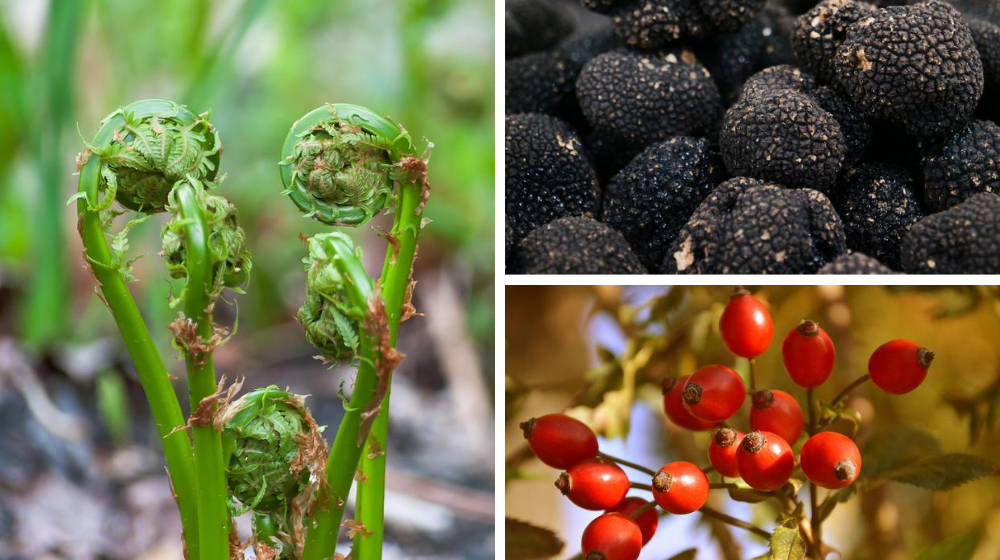
- Left: Fiddlehead Ferns | Top Right: Truffles | Bottom Right: Rose Hip Wild Rose
- Ramps
The Pacific Northwest is home to many culinary wonders that are actually wild edibles. Ramps, or baby leeks, are one such wonder. These little guys can be found in early spring, washed, and sautéed.
- Fiddlehead Ferns
Fiddleheads are such a telltale sign that spring has arrived. These are hard to miss because they look like the plant version of a green curled up lollipop. They are delicious sautéed with garlic.
- Truffles
The Pacific Northwest is home to the only naturally occurring truffles in the Nation. These are not as fragrant as the truffles of Europe, but they are tasty and edible. If you can learn to find them you can both eat them and sell them!
- Wild Rose
The rose hips on a wild rose are packed full of Vitamin C and they give you something to eat even in the cold weather. These are delicious and get better after the first freeze.
- Mustard
Mustard is both a seed and a strong peppery green. Its greens are one of my favorites! They have a real bite to them, and I just feel the benefits when I eat mustard.
3. South
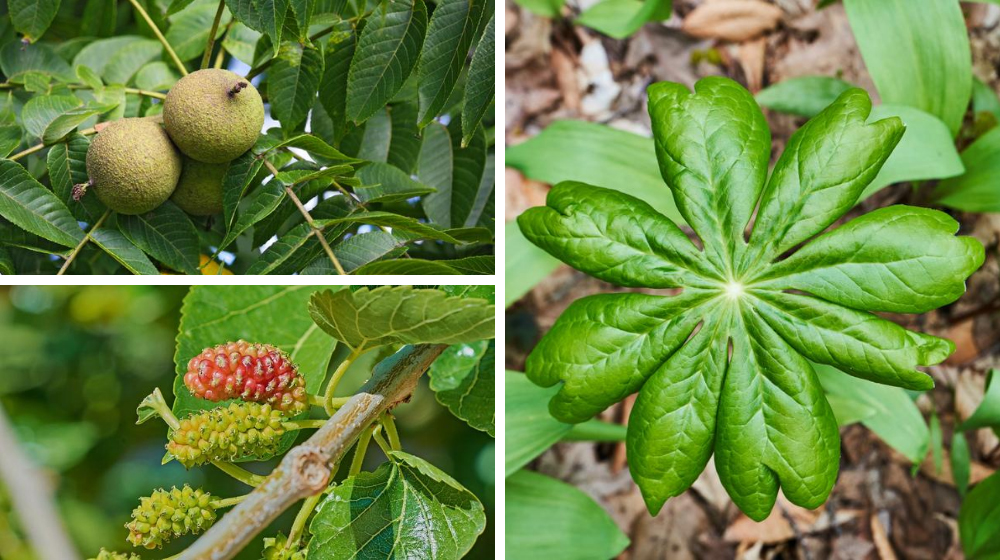
- Top Left: Black Walnut | Bottom Left: Mulberry | Right: Mayapple
- Paw Paw
The paw paw tree is one of the hidden gems of our nation. It is a tropical tree that hides in the marshes of the south and grows a nice big fruit that is something like a mango mixed with a banana. You gotta seek these out in areas near water sources
- Black Walnut
Black walnut is as powerful as food as it is a medicinal tree. They are also very easy to identify. The walnuts must be hulled and dried before eating so they are not an immediate food source.
- Hazelnut
A bushy tree, the hazelnuts are ready for foraging around the beginning of fall and are absolutely delicious. If you’re not sure if it’s a hazelnut, just refer to the last batch of mixed nuts in the shell that you had. The wild variety is smaller.
- Mayapple
In the spring, a little umbrella-like plant appears all around the forest floor. It’s one of the earliest plants. By the end of April or the beginning of May, these plants will have a small fruit hiding under the large umbrella leaves. That is the fruit of the mayapple. Kind of dull in flavor but food, nonetheless.
- Mulberry
Another late spring food that explodes with tasty fruit in the late part of May. These berries are best when they are dark. They can be quite sour when underripe.
4. East Coast
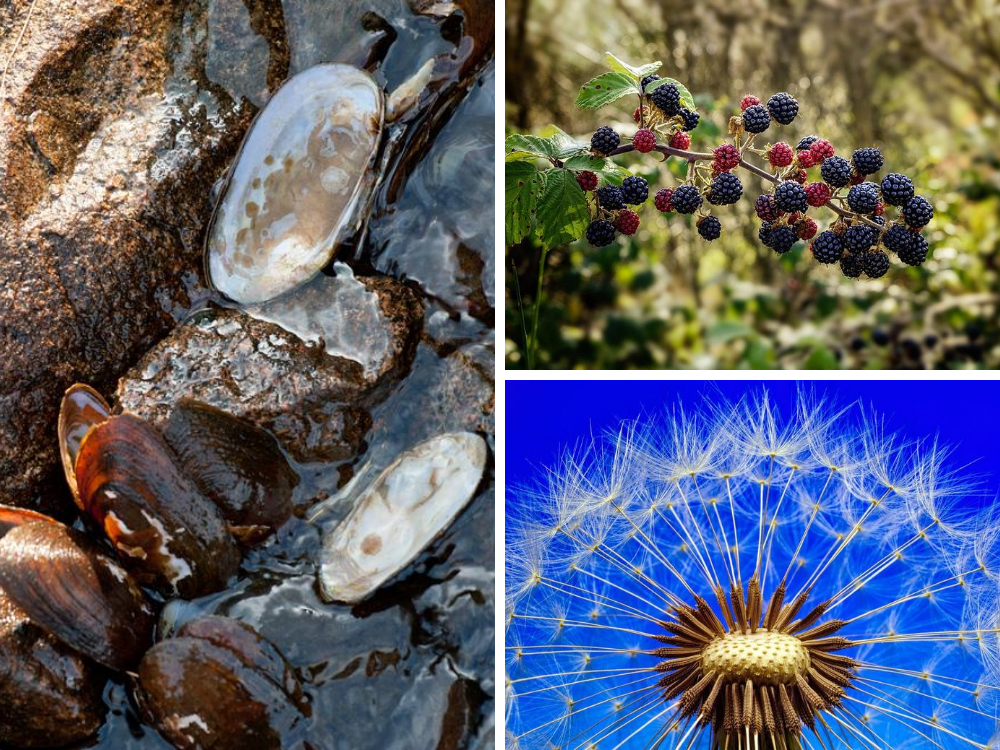
- Left: Fresh Water Mussel | Top Right: Blackberry | Bottom Right: Dandelion
- Blackberry
Blackberry is everywhere, and you can enjoy the fruit as most do, and you can even enjoy the leaves in a tea. Easy to identify and delicious, everyone should be able to identify blackberry.
- Japanese Knotweed
This plant looks like a strange, wicked bamboo. It is a foreign invasive with a sour taste like rhubarb. It is something you are going to want to eat young and sauté when you eat it.
- Dandelion
We all have seen dandelions. The leaves show up in salads and the golden heads can be baked into bread. You can even roast the roots and grind them to make a coffee-like beverage that is caffeine-free.
- Fresh Water Mussel
Most people don’t think about mussels as a wild edible. However, foraging mussels is easy and one of the nutrient-dense protein sources!
- Seaweed
It washes up on the coast or can be harvested in areas where the tide is not as vicious. When you find it, take it! People charge lots of money for seaweeds these days, especially in pill form.
5. Deserts
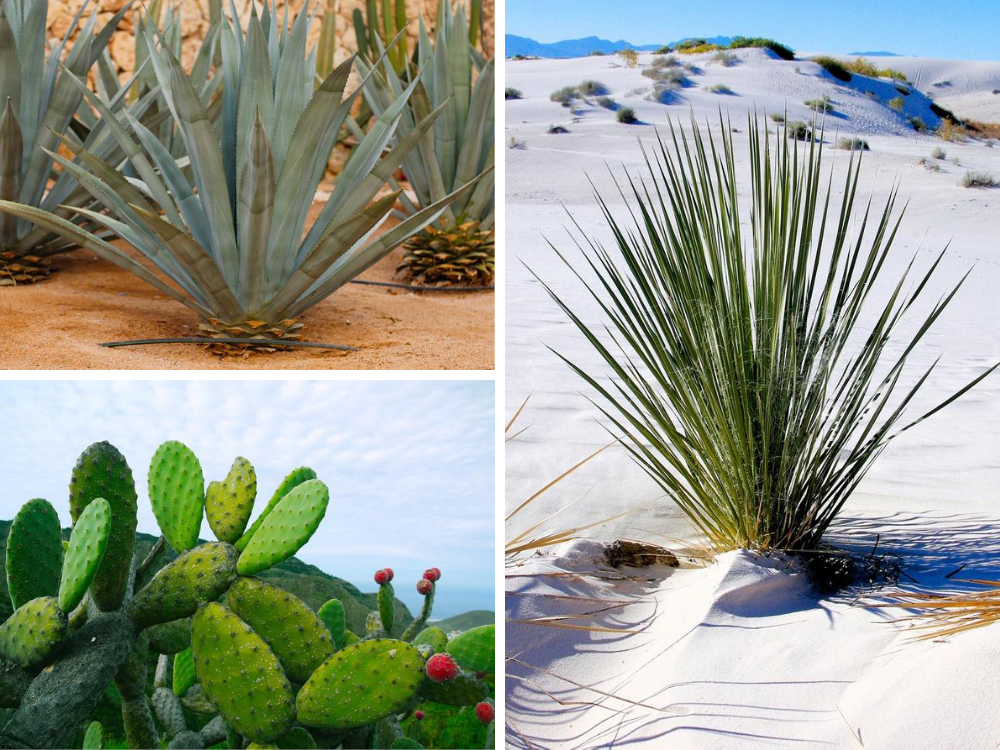
- Top Left: Agave | Bottom Left: Prickly Pear | Right: Yucca
- Yucca
Yucca root is starchy and filling. It is a carbohydrate that will give you precious energy in a desert environment. Yucca is easy to identify and simple to get at.
- Sage
Another easy to identify leaf in the safe plant. This is one of those incredible plants that come from ancient roots and has been an edible in writings that are thousands of years old.
- Saguaro Cactus
This is the typical cactus that comes to mind when thinking of the desert. Not only is the flesh of the cactus edible but it also contains water, which is of the utmost importance in desert survival.
- Agave
Agave has been used to substitute cane sugar for years now! If you find these spires that resemble aloe, you will be able to get a sweet treat in the harsh desert landscape.
- Prickly Pear
The prickly pear is the fruit of the cactus and is pinkish-purple in appearance. They are hard to miss but just give them a taste to be sure they are ripe.
Now that you know the wild edible plants you can forage, you have an increased chance of surviving in the wild. However, it does take practice to identify these wild edibles and make sure you don’t consume anything poisonous.
Have you tried foraging wild edible plants before? Share with us your experience in the comments section!
Up Next:
-

 Do It Yourself7 months ago
Do It Yourself7 months agoParacord Projects | 36 Cool Paracord Ideas For Your Paracord Survival Projects
-

 Do It Yourself9 months ago
Do It Yourself9 months agoHow To Make Paracord Survival Bracelets | DIY Survival Prepping
-

 Do It Yourself9 months ago
Do It Yourself9 months ago21 Home Remedies For Toothache Pain Relief
-

 Do It Yourself10 months ago
Do It Yourself10 months agoSurvival DIY: How To Melt Aluminum Cans For Casting
-

 Exports8 months ago
Exports8 months agoAre Switchblades Legal? Knife Laws By State


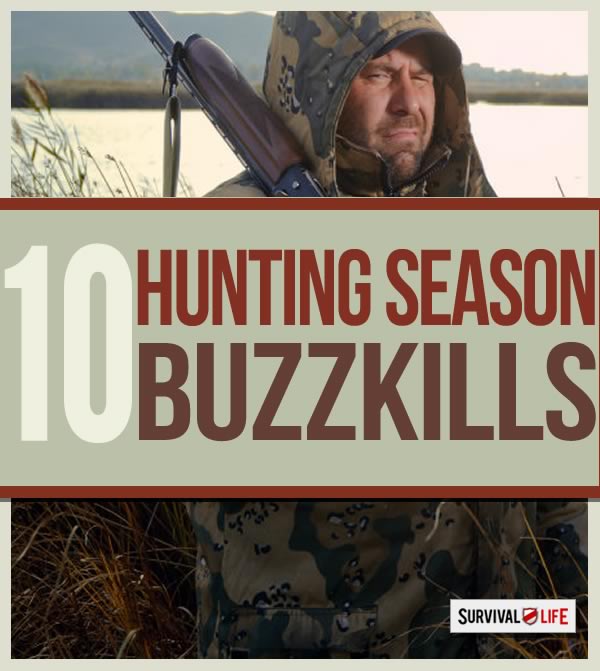



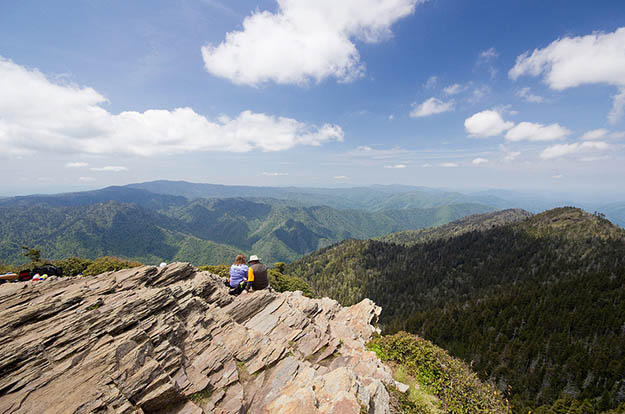

Pingback: Know Your Fiber: Wild & Edible Plants - Primal Survival
Pingback: Is Purslane Edible? Foraging Edible Plants In Spring – The Self-Sufficient Life
Pingback: Is Purslane Edible? Foraging Edible Plants In Spring – surviveurself
Pingback: Is Purslane Edible? Foraging Edible Plants In Spring – Alive After USA Fall
Pingback: Is Purslane Edible? Foraging Edible Plants In Spring - Cooking in Quarantine
Pingback: Is Purslane Edible? Foraging Edible Plants In Spring | Survival Go Bag
Pingback: Is Purslane Edible? Foraging Edible Plants In Spring – SurvivalHood
Pingback: Merchants of the Wild [PODCAST] – The Self-Sufficient Life
Pingback: Merchants of the Wild [PODCAST] – surviveurself
Pingback: Merchants of the Wild [PODCAST] – Alive After USA Fall
Pingback: Merchants of the Wild [PODCAST] | Best Go Bag
Pingback: Merchants of the Wild [PODCAST] - Cooking in Quarantine
Pingback: Top Tips for Spring Foraging – The Self-Sufficient Life
Pingback: Top Tips for Spring Foraging - Cooking in Quarantine
Pingback: Top Tips for Spring Foraging - Primal Survival
Pingback: Top Tips for Spring Foraging – SurvivalCove.com
Pingback: Top Tips for Spring Foraging – Bulletproof Survivors
Pingback: Top Tips for Spring Foraging – Sprent Brass
Pingback: Can You Eat Dandelions? Which Are The Edible Parts & How To Eat Them - WildSurvivalDigest.com